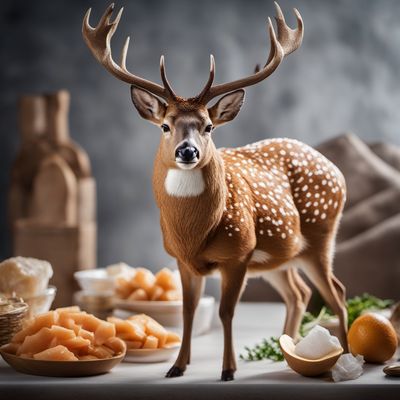
Ingredient
Pig fat tissue
The Flavorful Lard
Pig fat tissue, or lard, is a semi-solid fat with a creamy white color and a distinct porky flavor. It has a smooth, velvety texture and melts easily when heated. Lard is often used in baking, frying, and sautéing to enhance the flavor and texture of dishes.
Origins and history
The use of pig fat in cooking dates back centuries and has been a traditional ingredient in many cuisines around the world. Lard was highly valued for its ability to add flavor, moisture, and richness to dishes. Today, lard is still used in traditional recipes and is appreciated for its unique qualities in both savory and sweet preparations.
Nutritional information
Pig fat tissue, or lard, is primarily composed of saturated fats. It is a good source of vitamin D and can be a flavorful alternative to vegetable oils or butter in cooking and baking. However, it is high in calories and should be consumed in moderation as part of a balanced diet.
Allergens
May contain pork allergens.
How to select
When selecting pig fat tissue, look for lard that is pure and free from additives or preservatives. It should have a clean, mild aroma and a creamy white color. Avoid lard that is yellowish or has a rancid smell.
Storage recommendations
To store pig fat tissue, or lard, keep it in an airtight container or wrapped tightly in plastic wrap. Store it in the refrigerator to extend its shelf life. Lard can also be frozen for long-term storage. Use within a few months for the best quality.
How to produce
Pig fat tissue can be produced by rendering the fat from pork cuts, such as the back fat or belly fat. This can be done at home by slowly heating the fat over low heat until it melts and separates from the solids. The melted fat can then be strained and cooled to solidify into lard.
Preparation tips
Lard can be used in various cooking methods, including frying, sautéing, and baking. It adds a rich, savory flavor to dishes and can be used to make flaky pie crusts, crispy fried foods, and tender pastries. When using lard in baking, it is important to keep the ingredients and equipment cold to achieve the desired texture.
Substitutions
Vegetable shortening or butter can be used as substitutes for pig fat tissue, or lard, in recipes. However, the flavor and texture may be slightly different.
Culinary uses
Pig fat tissue, or lard, is commonly used in dishes such as biscuits, pie crusts, fried chicken, pastries, and traditional Mexican cuisine. It is also a popular ingredient in traditional British and Southern American cooking.
Availability
Pig fat tissue, or lard, is commonly available in regions where pork is consumed, including Europe, North America, and parts of Asia and Latin America.
More ingredients from this category

Goat fat tissue
Liquid Gold: Unleashing the Richness of Goat Fat

Sheep fat tissue
The Velvety Indulgence: Sheep Fat Tissue

Deer, fresh fat tissue
The Richness of Nature's Bounty

Camel fat tissue
The Richness of Camel Fat

Bovine and pig, fresh fat tissue
Luscious Fat

Marine mammals fat tissue
The Ocean's Nutritional Treasure: Exploring Marine Mammals Fat Tissue

Hare fresh fat tissue
The Delicate Essence of Hare's Fat Tissue

Equine fat tissue
The Richness of Equine Fat

Bovine fat tissue
The Savory Fat Marvel

Wild boar, fresh fat tissue
The Luscious Fat of the Wild: Exploring the Richness of Wild Boar Fat

Rabbit, fresh fat tissue
The Lean Protein with a Delicate Flavor